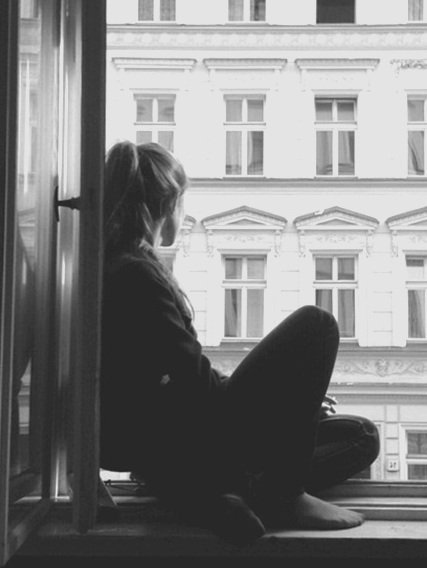She smiled with all the delight of a kid on Christmas morning and said,
“Y’all smoke to enjoy it. I smoke to die.”
You know what is so absolutely wrong with this line from John Green’s Looking For Alaska? It’s been spoken by a high-school girl who is too young to understand the message behind these words.

The kind of message that it sends is dangerous yet quite rampant. It is a reflection of a strange trend that romanticizes depression, anxiety and the sort of bodily harm which is a result of the same.
Recently, someone narrated an incident where her 15-year-old cousin brother asked if the filter on the photo she wanted to post on Instagram was dark enough to “look deep.” The next question asked was, “If my silence is another word for my pain,” sounds meaningful for the “dark and deep” photo being posted. This simple narration left me speechless. This is not how a 15-year-old is supposed to talk.

Considering that social media profiles are a sneak peek into the kind of lives that we’re living, you’d think it is strange for someone wanting to portray themselves as sad. Now, sadness has been adorned by various fictional characters from the time of Shakespeare to the time of John Green, but somehow, people today can’t seem to differentiate between reel and real.
Now, it is all about aesthetics. A black and white photo of someone staring off into the distance puts psychological torment and beauty on the same page.
Grace Kingsbury admits in a blog called ‘Into the fold’:
“When I was younger, I used to think it was the coolest to be tortured and romanticised the idea of it all. Now I have grown up, met more people and experienced more, I can’t see how I was so naive!”

Out of Tumblr’s 140+ million blogs, the most famous ones happen to be about mental health issues.
While most of them exist under the garb of support groups, the truth is that there are graphic images of people cutting themselves or displaying suicidal thoughts.
Anyone can look up tags like “Self-harm,” “Depression,” or “Sadness,” and find thousands of blogs with a similarly distorted vision of what it means to be depressed. Hence, it becomes extremely difficult to differentiate between negative thoughts and depression.

You may be #PrettyWhenYouCry but crying is not what makes you pretty. You may be an interesting human who suffers from depression, but having depression is not what makes you interesting. To jump from aesthetic sadness to issues of mental illness and glamourizing something that plagues those who suffer from depression, or anxiety: how can the two not begin to intertwine?
To reduce a human to the sum of their emotional or mental state is not beautiful but to aestheticize and glamorize feelings associated with real problems, faced by real people, for the sake of a ‘likeable’ social media persona is an even bigger crime. Appropriating mental illness and propagating a culture whereby the word ‘bipolar’ is thrown around as a casual allusion to mood swings, and depression is quirky or cute, is not beautiful.

So, don’t believe RM Drake when he says, “We desire to keep the pain close, close enough to destroy us,” because the sad state isn’t the driving force behind anything poetic. Please try not to listen to Effy From Skins when she says that she is waiting for the end of her life.
Everyone suffering from mental troubles has real problems. Their illness is not poetic or deep. It’s dangerous. Neither does it make your social media profile interesting.
The internet needs to stop glorifying something that real people suffer from just for a couple of extra ‘likes’.
Feature image via Bhumika.B Photography

















